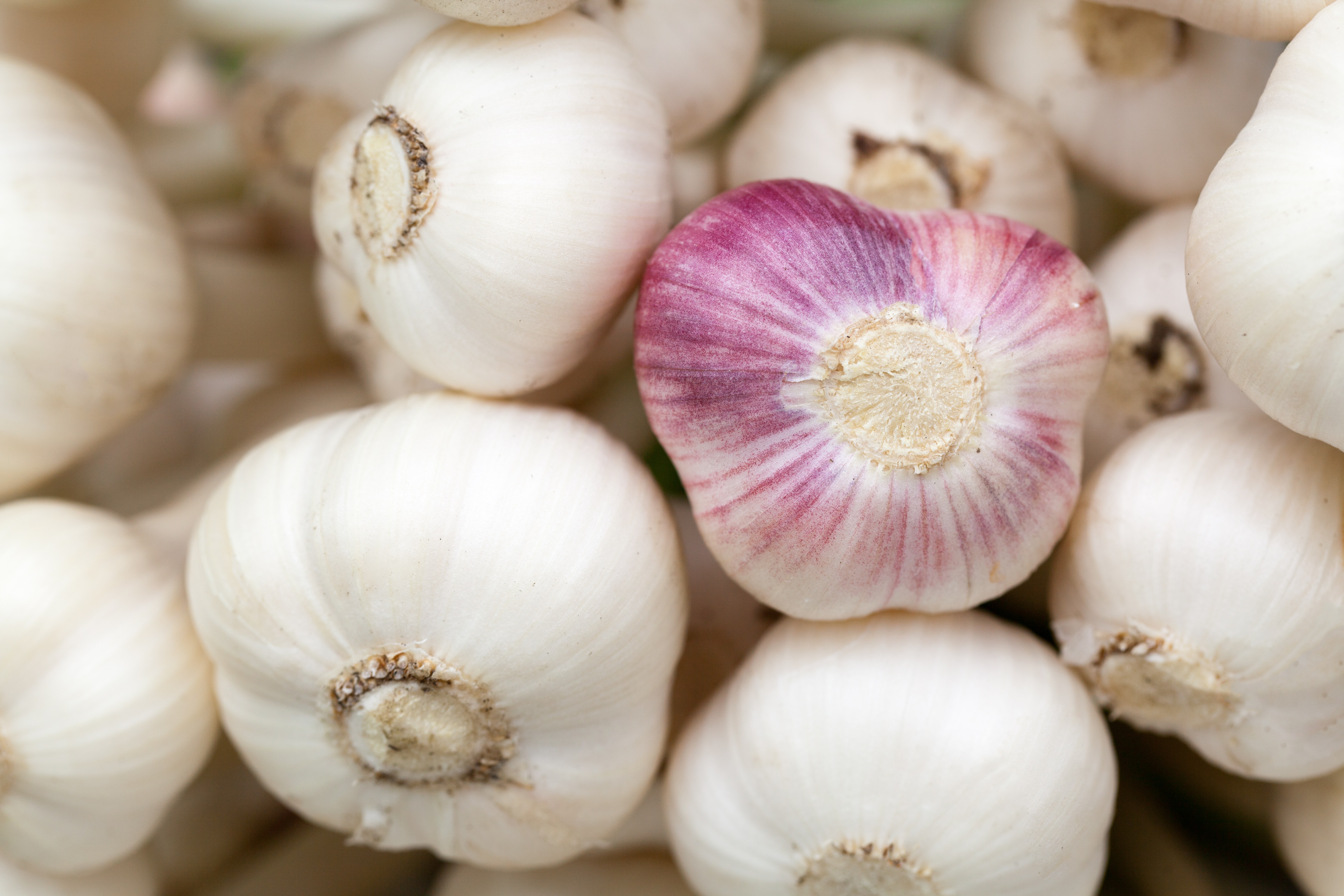Thursday, September 28, 2017 - Horn flies are the pesky flies seemingly attached to the backs  and sides of cattle by a magnetic-like field. When disturbed, they lift up, but never fly away, coming right back to continue feeding on the animal’s blood. They may take as many as 30 meals a day until mating, when the females leave to lay eggs in fresh manure.
and sides of cattle by a magnetic-like field. When disturbed, they lift up, but never fly away, coming right back to continue feeding on the animal’s blood. They may take as many as 30 meals a day until mating, when the females leave to lay eggs in fresh manure.
A test demonstration project at Beacon Hill Community Pasture in the boreal forest fringe of northwestern Saskatchewan investigated the results of feeding trace mineral (TM) salt fortified with garlic powder.
Cows that received trace mineral (TM) salt fortified with garlic powder had 52 percent and 56 percent fewer flies on average than the two control groups that received TM salt alone during a summer-long demonstration.
The treatment group of 150 cow/calf pairs received TM salt mixed with garlic powder at 2.1 percent of the weight of the TM salt. Control-1 (115 pairs) and control-2 (150 pairs) received TM salt without garlic powder. The herds grazed in separate pastures about three kilometers apart during the demonstration period which ran from May 25 to September 13.
Videos of each group were taken between 10 a.m. and 3 p.m. on June 1, July 6 and 21, August 10 and 30, and September 13. Still photos of the faces and sides of cows sampled were pulled from the videos and the Adobe Photoshop count tool was used to count flies visible in the photos. Fly counts include face flies around the eyes, mouth and muzzle, horn flies clustered on the poll, back, sides and undersides, and stable flies sticking mainly to the legs.
The season-long average for the cows sampled in the garlic group was 75 flies per cow. The cows sampled in the two control groups that received TM salt alone had average fly counts of 156 and 171.
The difference became quite striking 41 days into the trial with the garlic group averaging approximately 100 fewer flies per cow than control-1 on July 6. The fly load in the garlic group peaked at the July 21 count, averaging approximately 150 flies per cow. It then dropped by about half by August 10, which coincided with the highest average counts for both control groups.
The garlic group consistently had the lowest fly count and exhibited the fewest fly-avoidance behaviors throughout the trial period.
Daily consumption was within the expected range, averaging 0.12 pounds of TM salt per head (cows plus calves plus bulls). TM salt consumption was 0.18 pounds and 0.15 pounds per head per day for control-1 and control-2, respectively.
No adverse health effects were observed when incorporating garlic powder at 2.1 percent of the TM-salt weight.
This project demonstrated garlic powder is easy to feed and didn’t discourage TM salt intake, while reducing fly loads throughout the grazing season.
Learn more at this link